Nectar strategy
2020 — Ongoing
Planning the future — taking a customer-focused approach to evolving the Nectar experience.
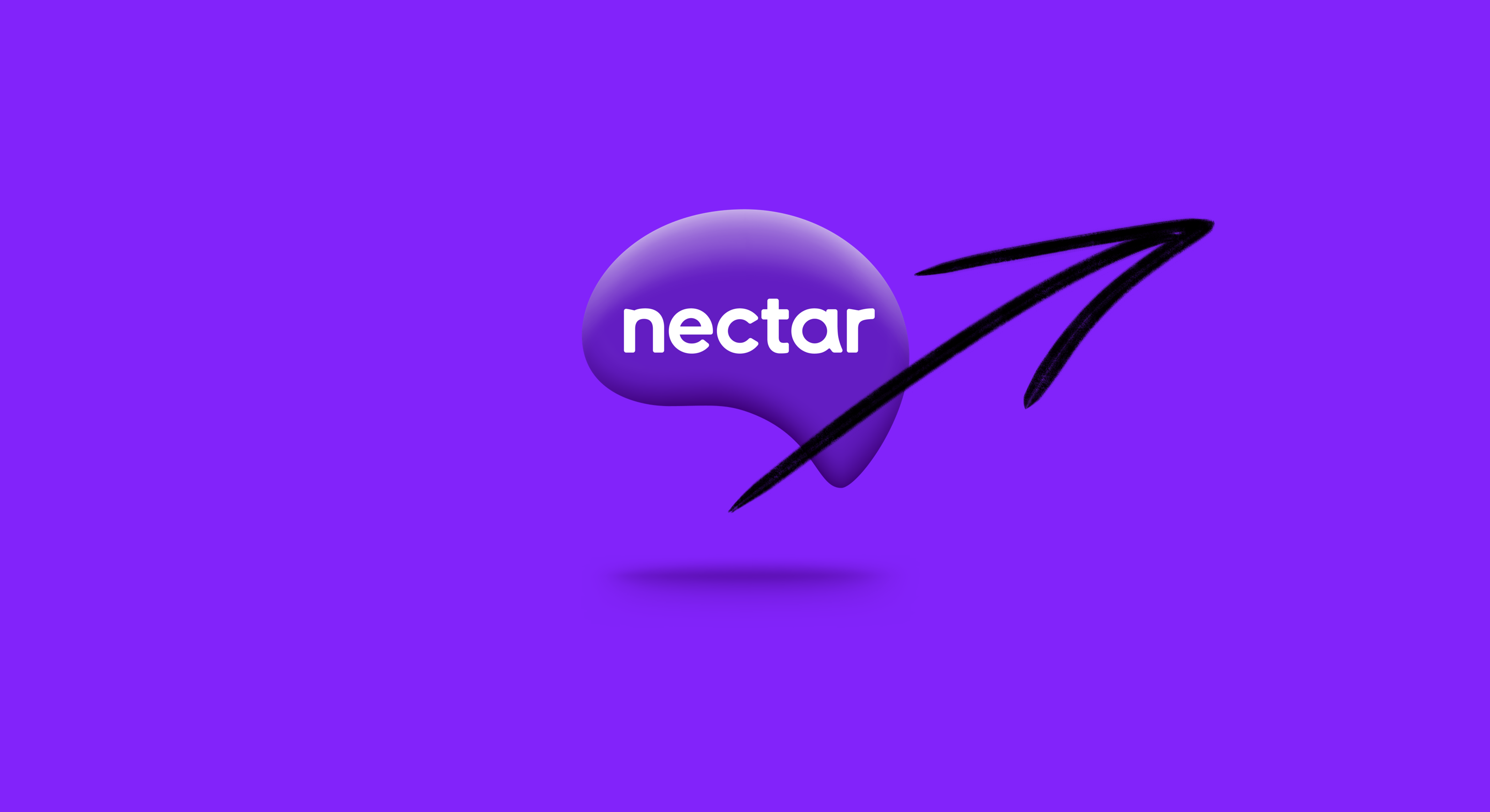
Intro
After the outcome of a strategic review led by Sainsbury's CEO Simon Roberts, I was tasked with defining initiatives and measurable metrics for the digital Nectar product; working closely with the Principal Product Owner and Marketing directors across the business.
These initiatives support our group loyalty outcomes for 21/22 and wider business goals. Everything is aligned with our Sainsbury's purpose — to help customers "Live well for less".
Kindly note that due to the highly-sensitive nature of this ongoing project, some images may be blurred.
Process
With a complex stakeholder set-up, internal moves due to maternity leave (congrats!), pre-planned marketing events and tons of data to get through — this was always going to need a dose of patience and a significant collaborative effort.
As ever, everything was pulled together on Miro and shared as widely as possible from the very beginning.
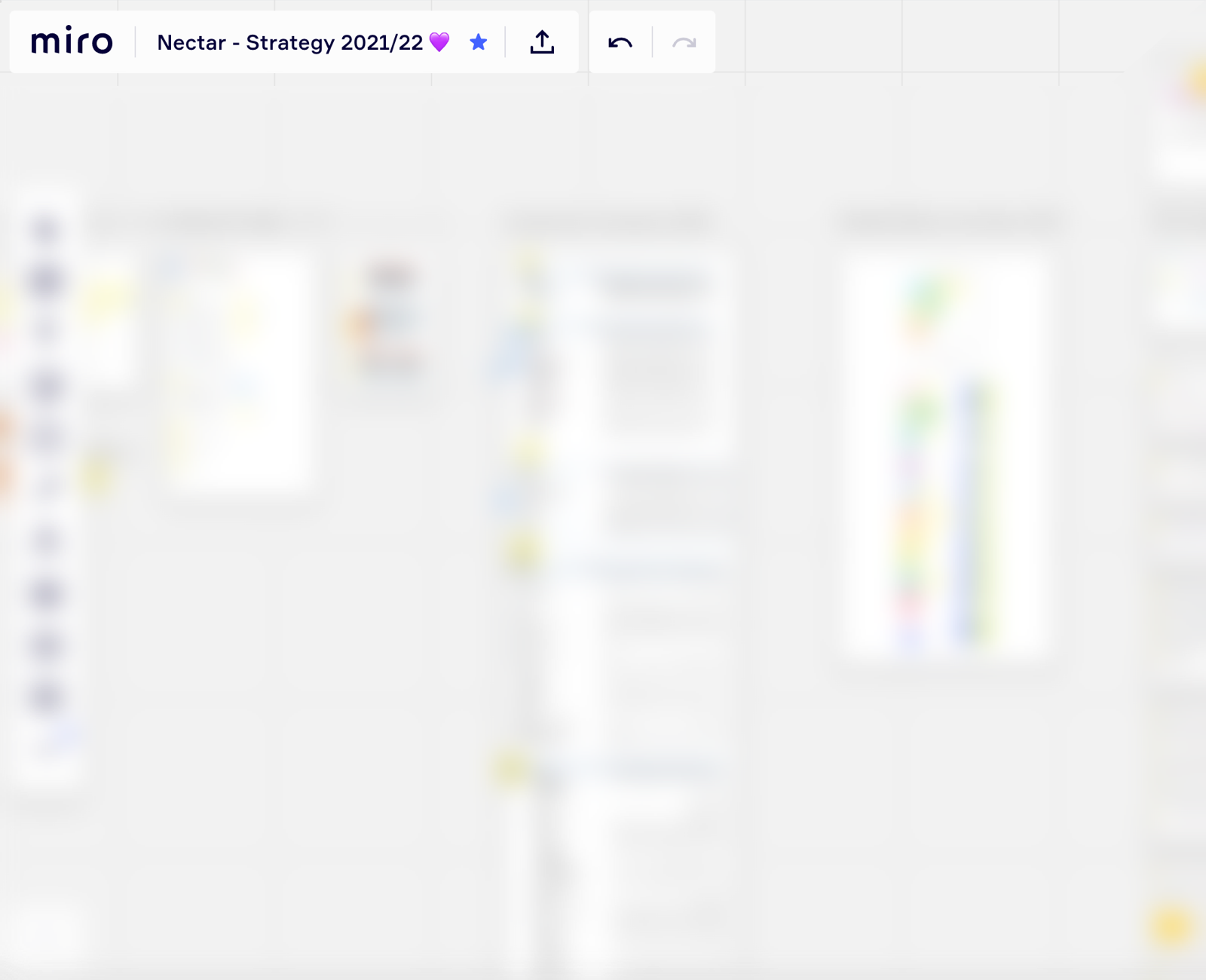
Miro is used across the business
Marketing roadmaps
Start with what you know — this meant consolidation of all pre-planned activity for 2021 across two marketing departments and directors.
Much of the activity planned for the latter part of 2021 was understandably vague and given the unknowns around how COVID-19 would continue to affect life, a level of ambiguity had to be accepted.
Market Insight
Insight from YouGov helped to provide broader context — how do customers feel about loyalty programmes right now and where are the trends moving.
The latest from McKinsey summed up the significant uptake in usage of digital products and services we've seen this year — we saw more digitally inexperienced customers using the app for the first time, alongside other Sainsbury's products with Nectar integration.
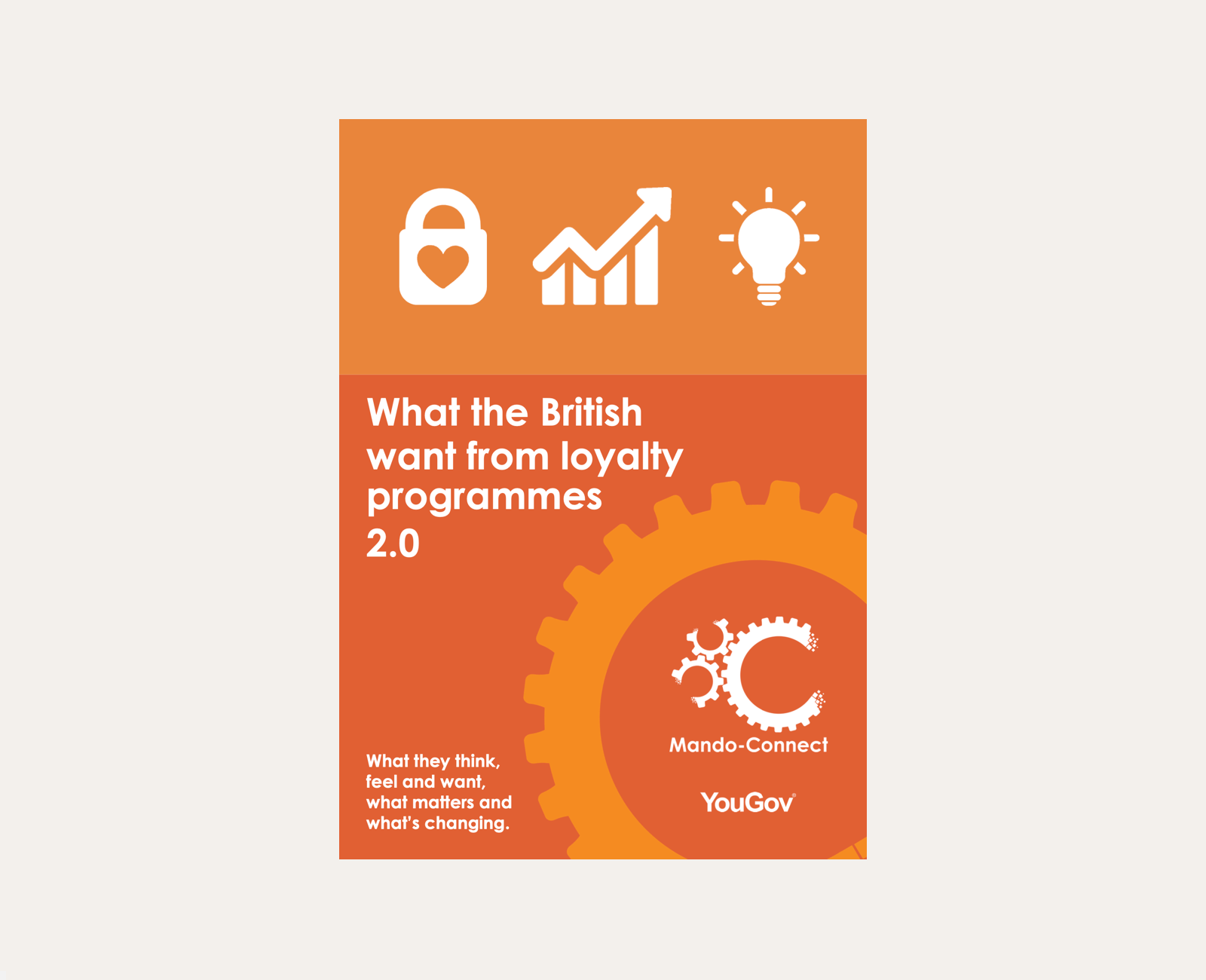
Market Insight reports
CSAT + NPS and Personas
We included CSAT + NPS metrics to help build a very high-level picture of customer satisfaction at a propositional level. It's worth noting I wouldn't advocate these as primary metrics; nor for anything more specific.
These were mapped against our 6 customer personas with YOY comparisons, to gauge who was the most and least satisfied.
Over the last year, we've worked closely with marketing to translate previously analogue promotional campaigns into engaging and playful app experiences. We identified these as a potential contributor to high scores amongst key personas.

Our most satisfied personas
We also wanted to consider the impact that COVID-19 was having on our customers. We found that the percentage of customers with incomes lower than the UK median had increased throughout 2020.
These customers were more likely to use their points to afford their monthly food shopping instead of treating themselves or building their balances.
It was humbling to consider that Nectar was making a meaningful difference in the lives of hundreds of thousands of people.
This insight really helped to shape our sense of purpose as a design team and wider business.
"Points helped me get bits I could not afford as I've been off work due to ill health and shielding, thank you."
Robbie, Sainsbury's customer
Customer survey
Together with the insights team we simultaneously launched a statistically relevant survey to a wide spectrum of customers. Together, we wrote up over 20 questions that were centred around the app experience and we included a segment on potential future features.
2.5K
customers surveyed
87%
either satisfied or very satisfied
We've worked hard to create a simple app that works for the majority of Nectar collectors and this was reflected in overall sastisfaction.
This relatively high score meant that, to an extent, we had to hypothesise around certain aspects of the app experience and note them down for future validation. After all, think of all the great product features we use every day that we didn't know we needed?
We still had plenty of clarity around areas we could make meaningful improvements:
Self-serve, notifications, activity and personalisation
Mostly, however, we noted things in the areas of:
Tech, data, service and marketing
Whilst these sit outside of the experience design remit (and more importantly, specialism) — we'll work closely with those teams to ensure their roadmaps reflect the view of the customer.
Product snapshot
We pulled together an updated snapshot (a visual sitemap) of the app — a great opportunity to identify some older files to transition across to Figma too.
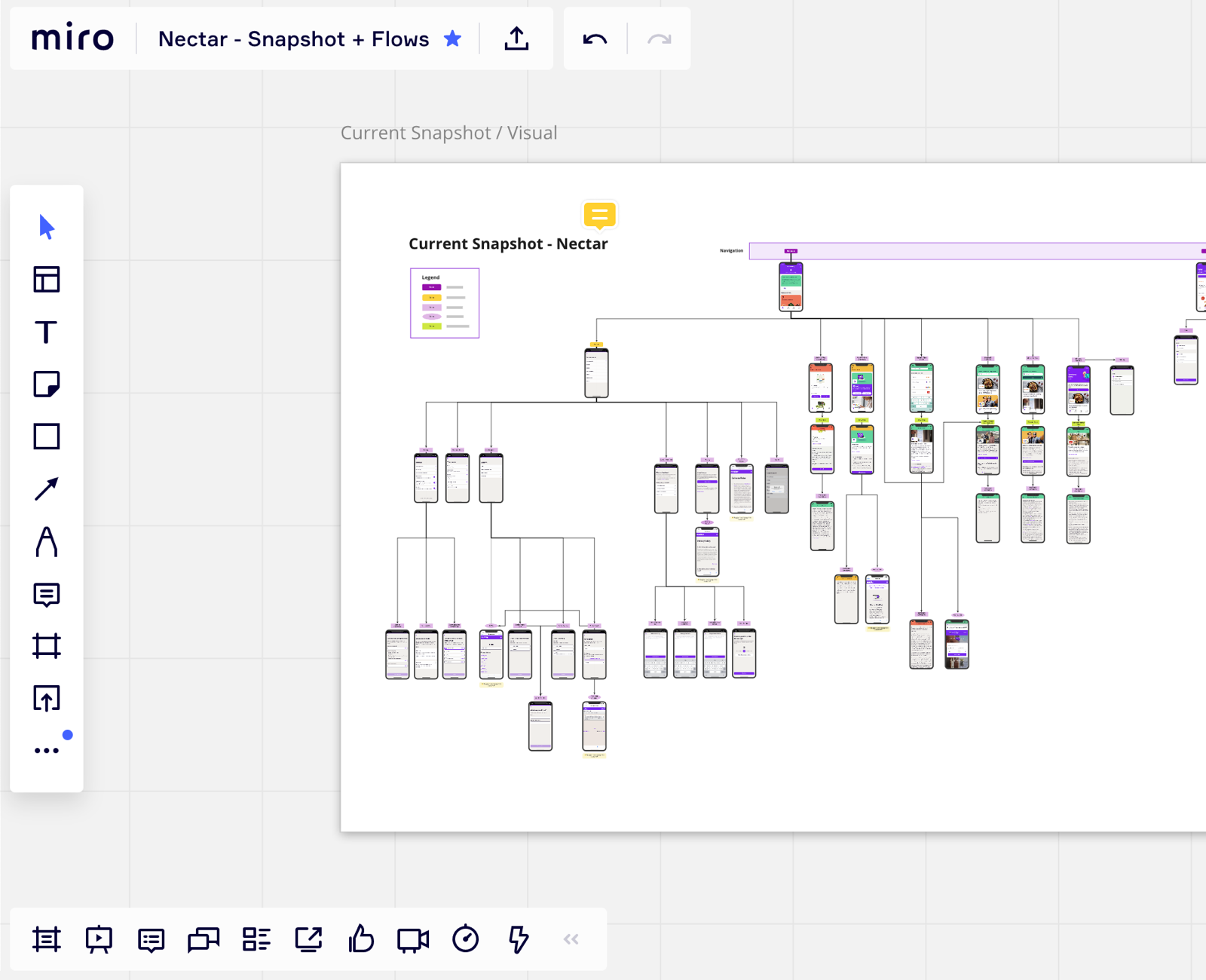
Snapshot in Miro
Pain points and opportunities
Next we gathered data and extensive customer feedback from a diverse range of sources:
Google analytics, social channels, app store reviews, in-app feedback, online surveys, store managers and colleagues, and customer services
Gathering all the relevant data via GA wasn't the easiest of tasks, so we worked with analytics to create a custom dash with everything that's useful in easy reach.
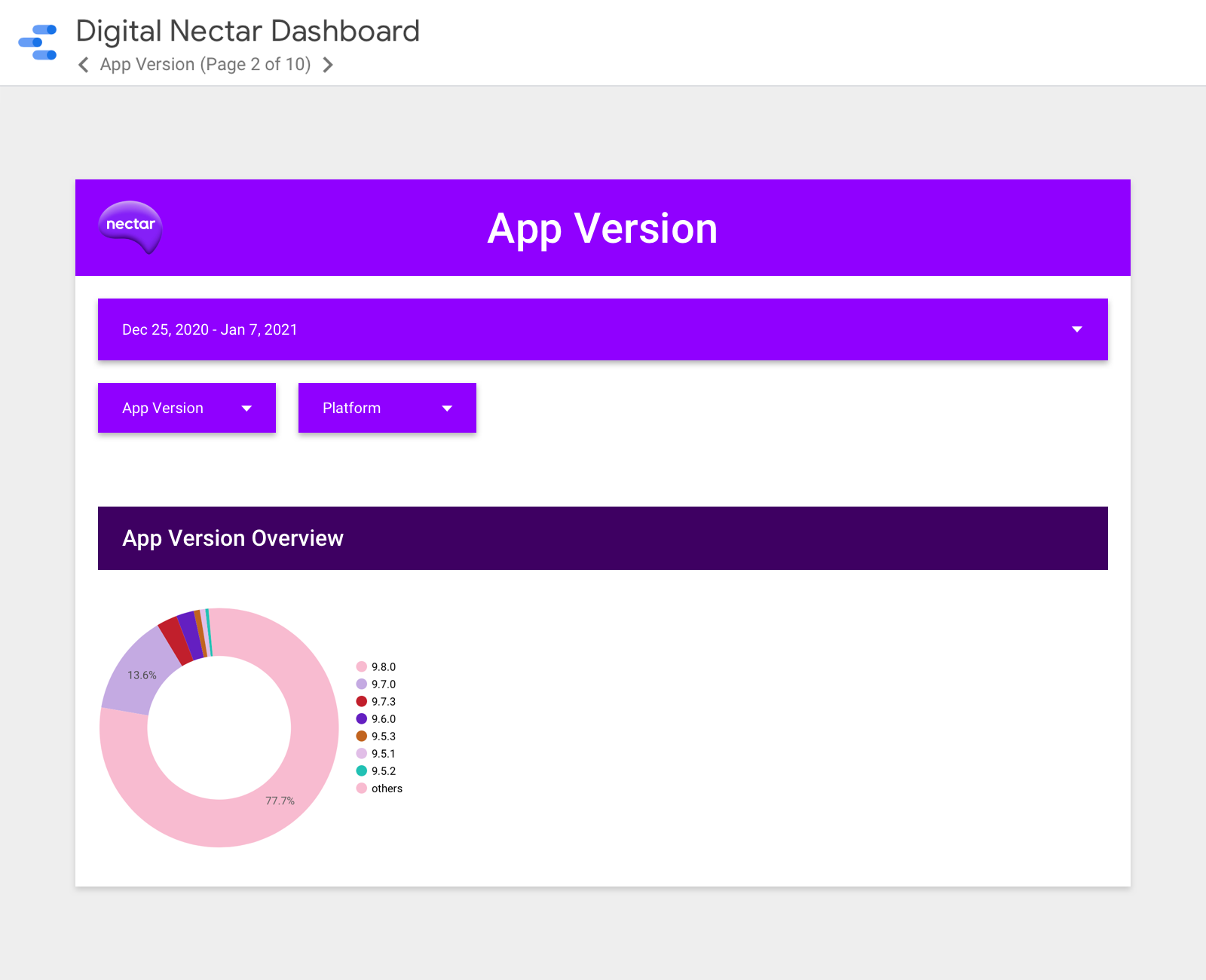
Custom dash — making GA easier for all
We then analysed and mapped out a large number of customer pain points across all stages of app journey and wider Nectar integrations.
Some pain points we discovered didn't have meaningful scale behind them — we still included them but noted that further validation was necessary.
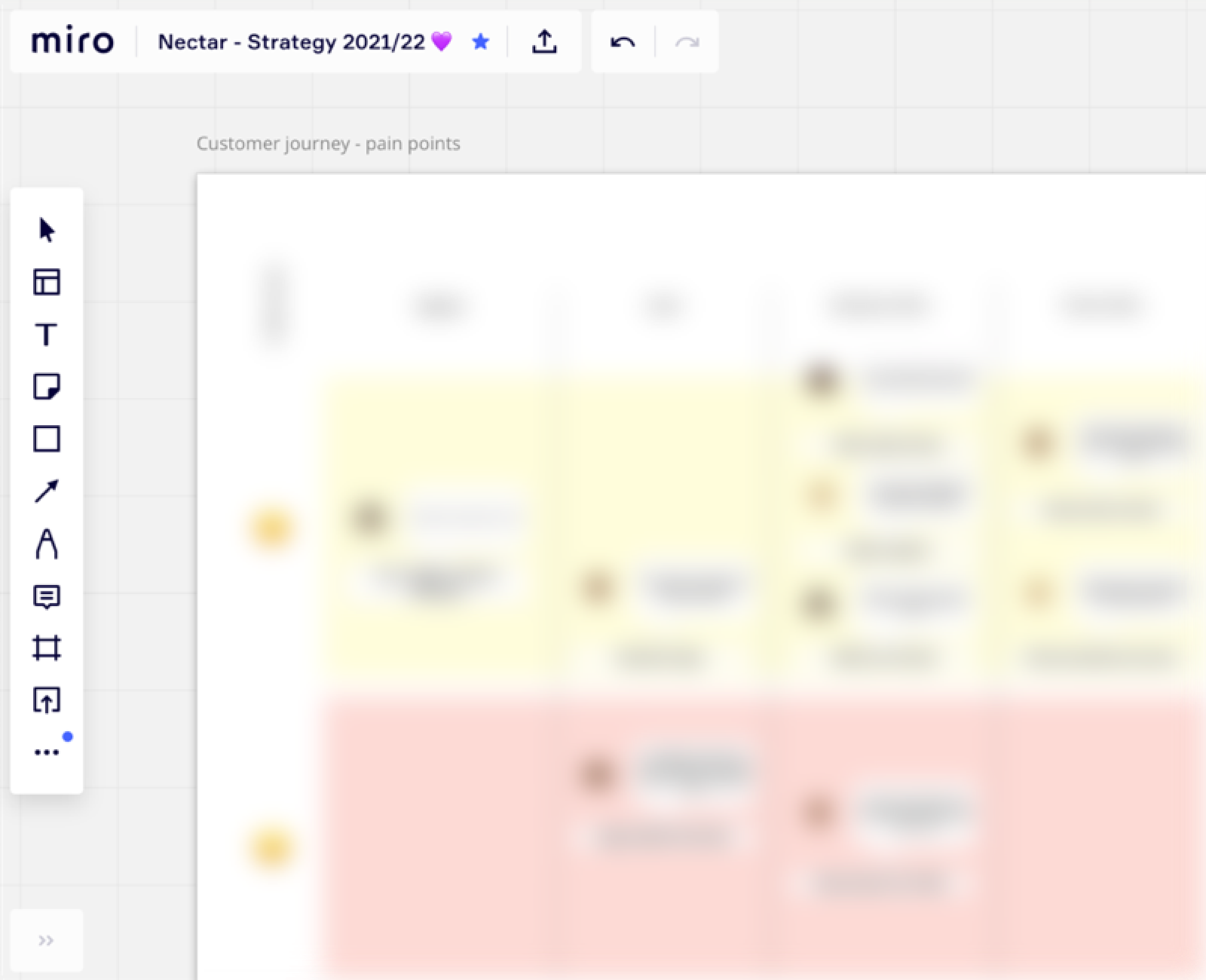
Journey mapping sneak peak
SteerCo
We consolidated our findings along with a high-level proposal for next steps, to be presented at the last SteerCo of the year.
We only had 2 slides. It sure wasn't easy.
Creative
When it comes to bringing our strategy to life, we'll continue to make Nectar stand-out amongst our competitors. We'll do this by evolving our product design language and the overall experience, with a focus on four key areas: distinctiveness, interactivity, simplicity and inclusivity.
Next steps
We're planning to engage a leading agency to deliver a quant pain points survey with meaningful scale (10,000 customers). Both the scale and the thoroughness of the process will be crucial — providing credibility to our initial qual findings and reassurance to key stakeholders.
The primary purpose will be to discover which parts of the experience and causing the most significant and widely felt pain for customers. However, we can already infer that some challenges will be too difficult to achieve in 21/22.
Additionally, we'll look out for themes that disproportionally affect certain groups of customers. This method has previously helped us to deliver some meaningful accessibility features such as system font support.
We'll then hold a series of stakeholder workshops in Q1 2021 — bringing a diverse group of people together from departments across the business. In those sessions, we'll look to discuss and prioritise pain points — taking into account feasibility and business objectives.
We'll also organise 1-1 conversation with director-level stakeholders to discuss anything that we can't share more widely due to sensitivity or NDA's.
We'll use everything we'll have learnt to shape a detailed, customer-focused product strategy with a set of initiatives and measurable metrics for the 21/22 financial year and a lighter inspiration piece for further in the future.
Measuring success
We'll clearly define and regularly monitor key results to make sure the product strategy stays in top shape.
Credits
Better together — these are just some of the wonderful people that made this work possible.
Design lead
Simon Collingwood
Principle product manager
Maeve O'Rourke
Analytics
Subika Sadiq
Insights
Marcus Kinsey, Sanne Smit
CX lead
Jacqui Hails
Let's talk